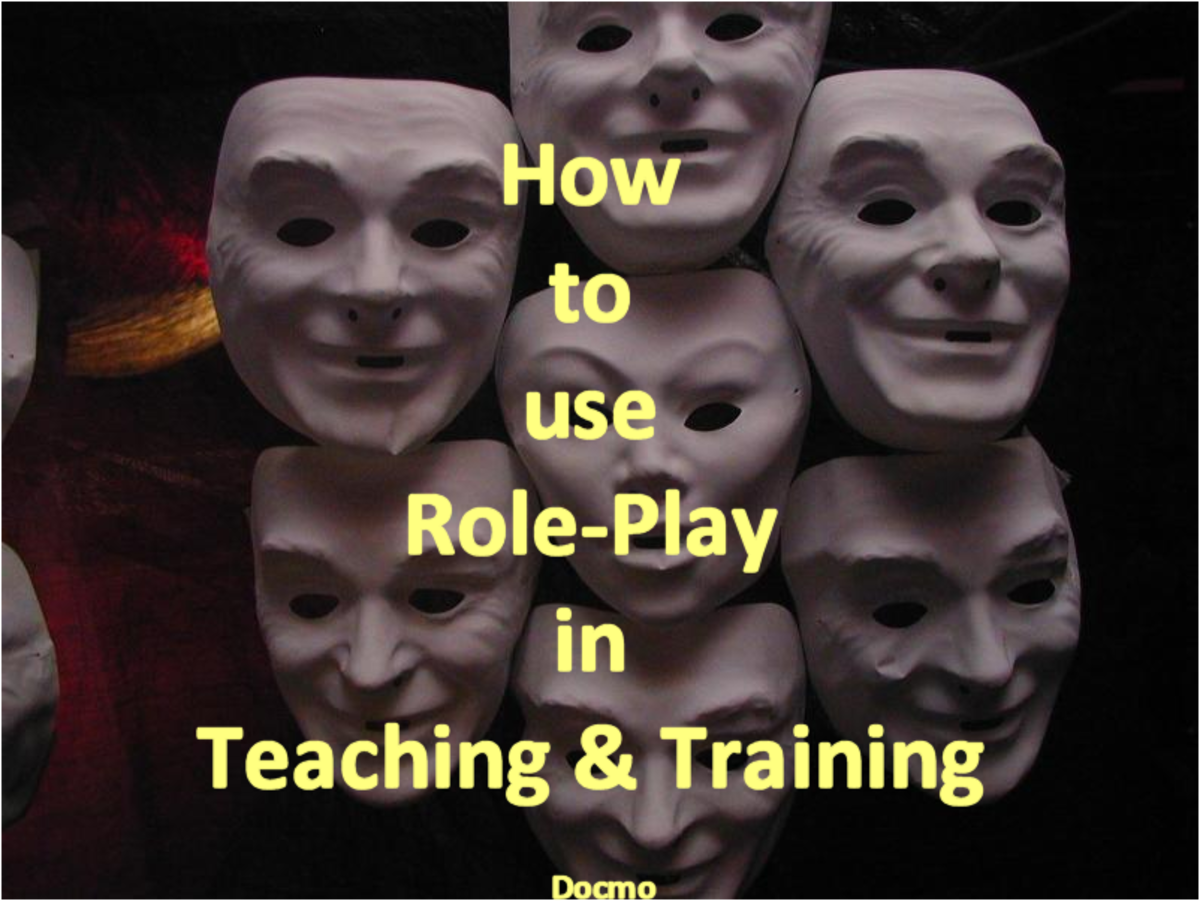Review of Carolyn Lieberg's Teaching Your First College Class
Teaching Your First College Class
Teaching your first college class can be a harrowing thought, but there are some good books that go through the nuts and bolts of how to get through the experience. Carolyn Lieberg’s (2008) Teaching Your First College Class does not qualify as a scholarly investigation of a new or unexplored topic.It is rather a how-to manual for those who are preparing to teach their first college class.The prospect of getting up to speak in front of a group of people can be quite a daunting task, as Lieberg points out.With some of the tips that she provides, first-time instructors who read the book will have an advantage.Prior to writing this book, she was the Associate Director for the Center for Teaching at the University of Iowa for eight years and she worked for the Carnegie Foundation for the Advancement of Teaching.Therefore, Lieberg was well-qualified to comment upon this topic.This work provided a good overview of some of the important topics that novice college teachers need to know before starting their first teaching opportunity.
Teaching Your First College Class covers the entire process of teaching that first class, from the apprehension first-time teachers feel, to setting up a syllabus, to grading, and everything in between.Lieberg (2008) intended her book not just as a resource for those who may be teaching their own section of a large lecture course.She also brings in tips for those who may be in charge of a discussion section or a weekly lab, as well as those who may only be responsible for grading student work.It is likely that more graduate students get their first teaching experience as teaching assistants with the latter duties, and this book provides practical tips for their new work.
Those who are new teachers, as well as those who have taught for years, can benefit from some of the suggestions that Lieberg (2008) makes.One of the first practical points that she gives is the fact that something will inevitably go wrong.She recommends that “maintaining an expectation that there will be obstacles will help enormously when they arise” (p. 3)The author points out three characteristics that teachers who get strong student evaluations exhibit: enthusiasm, knowledge, and caring (10-11).Probably every student encounters a professor without the first characteristic on Lieberg’s list, and those classes can definitely drag out painfully.She attempts to provide a few comforting words to the uninitiated by noting that they no doubt know more about their chosen subjects than do those who are sitting in the seats of the class.
Consistent with much of the recent work on teaching and learning, Lieberg recommends a student-centered learning environment that includes an active learning community that encourages critical thinking skills in those who endeavor to take the class. While she notes the two extremes of pedagogy with a sage on a stage lecturing for the allotted block of time or a facilitator who seems barely engaged as students work out their learning, Lieberg recognizes that most instructors will fit somewhere between the edges of pedagogical practice.She writes, “Along the continuum are many possibilities that make use of faculty members’ or GSIs’ expertise and creativity, including classroom activities, graphics organizers (flow charts, relational maps, and so on), group tests, spontaneous debates, and even the occasional mini-lecture” (p. 13).While she acknowledges that some instructors may lecture, it seems as though she discourages extensive lecturing in college classes, preferring rather an interactive learning experience that actively involves students.
From her discussion of teaching intentionally, Lieberg moves to an overview of what she recommends for the first day of instruction.She notes that colleges and universities often have an unstated expectation on what students encounter on the first day of class, whether a normal class period or a simple review of the syllabus.One area of practical advice in this chapter deals with handling the anxiety that most new teachers encounter as they enter class on the first day.Lieberg encourages novice teachers to “ignore people who say you should not be nervous or that you have nothing to be nervous about.”She points out that “deciding not to be nervous is a bit like deciding not to be awake” (p. 34).The author encourages readers to employ active learning from the start of the class by taking roll and initiating a small group exercise in the very first session of the class. These activities can ease nervousness and fear by taking the spotlight off of the instructor, and they have the side benefit of immediately getting students used to being involved in an interactive class.
From the first day, Lieberg (2008) moves to the creation of a syllabus or course guidelines.This ordering of chapters was a bit confusing, as instructors would need to have their course set up before the first day of class.Consistent with the recent emphasis on assessment, the author emphasizes the importance of setting up achievable course goals and learning outcomes that can be measured.Another important topic in this chapter is the course calendar.Lieberg encourages an accurate calendar when it comes to the scheduling of exams and assignments.This accuracy becomes more important as an ever-litigious society increasingly views the course syllabus as a contract between the instructor and the student.Because of this possibility of litigation, the author recommends a statement that acknowledges “the schedule may shift because of an alteration in the pace of the class, weather problems, or unforeseen events” (55).
Teaching Your First College Class then moves to the topic of assessment, which is another current topic of conversation in academic circles.In addition to in-class assessments that check what students are learning, Lieberg (2008) also mentions the Small Group Instructional Diagnosis (SGID).The SGID allows instructors the opportunity to have a midterm assessment of their class.Objective observers undertake the SGID by breaking the class into small groups to discuss what is working and what could be improved by the instructor.The instructor is not present and the student feedback is anonymous, which allows the process to provide excellent feedback for the first-time or seasoned instructor.
Two chapters in the middle portion of Lieberg’s (2008) book deal with preparing and facilitating discussions.Given the prominence of this topic in this work, it is apparent that the author encourages frequent discussions in the college classroom.This section of the book provides some good advice to first-time instructors.Included are recommendations on how to get everyone to participate in the in-class discussions, in spite of the fear of public speaking that many students may have.Lieberg includes a short handling of difficult and challenging topics that includes “taboos, personal values, and hurt or angry feelings” (pp. 91-92).These topics include the usual suspects of abortion, immigration, national health care, and other such highly-politicized concepts.In addition to politics and religion, she also points out that instructors will have “no idea as [they] stand in front of a group of students if family or friends of [their] students have declared bankruptcy, committed suicide, divorced, died, or learned they have a terminal disease.[They] may have a student who was mugged or raped, and the pain of such experiences may be just under the surface, ready to cause a reaction” (pp. 91-92).While this section does a good job of pointing out some complex topics that new teachers may encounter, it is short on giving recommendations on how to deal with such problems.
One of the most useful sections in Teaching Your First College Class provides some suggestions for getting discussion started off.In addition to such formats as elephant and jigsaw, Lieberg (2008) encourages formats such as role-playing and mini-presentations that can be memorable and provide great learning opportunities for students.The author then ends the chapters on discussion with recommendations for “discussions gone wild” (p. 116) and discussions for which students have not adequately prepared.The discussion on wild discussions might have been better served to have been located in the section on difficult topics, as these are the subjects that are most likely to provoke an incendiary discussion.
Chapters Nine through Eleven of the Lieberg’s (2008) book deal with the various assignments that college teachers may at one point or another employ in their classes.Even in the creation of assignments, Lieberg encourages active learning.The assignments that she discusses involve writing, group work, and presentation that force students to take a bit of initiative toward completion.A chapter on grading would be appropriate at this point in the book, but the author waited until after a chapter on plagiarism to deal with issues of grading.
Plagiarism is definitely a topic with which college instructors (as well as instructors at any other level) must deal.Lieberg (2008) does a good job of discussing methods of discouraging plagiarism by calling for assignments that discourage the act of academic theft.She rightly points out that assignments that call for students to write a 10-page paper on Machiavelli’s The Prince just ask for students to do a google search for just such a paper. Some students will even pay for papers like this to avoid doing the actual work.One of the practices that some college instructors employ is downloading one of these papers and then having students tear the paper apart in class to show them the quality, or lack thereof, of much of the content farms that students utilize.Lieberg then concludes this section of the chapter on plagiarism with some suggestions of assignments that are more difficult to plagiarize.
After the requisite chapter on grading, which includes some good strategies for the grading of subjective portions of the class like participation, Lieberg (2008) gives some good advice to graduate assistants who may be involved in the early days of their careers.Many of these students may not think of maintaining a record of their experience above a line on a resume.She points out that keeping a teaching portfolio is a good practice that can pay dividends as students look for employment inside or outside academia.In addition to the maintenance of a teaching portfolio, Lieberg recommends that graduate assistants participate in poster sessions and academic conferences that will enhance their career options to a greater degree.
Relation to Recent Literature
In Teaching Your First College Class, Lieberg (2008) largely corresponds with the position of Bain (2004) in the way she views the treatment of students.Both authors point out that good professors tend to be “compassionate people who really care about their students” (Bain, 2004, p. 136).Bain (2008) found that the best teachers in his study “displayed not power but an investment in the students” (139).By encouraging instructors to show they care for students’ success, Lieberg promotes a student-centered approach to the learning process.
Both Bain (2004) and Davis (2009) deal with in-class discussion in their works on teaching and learning.Their recommendations tend to correspond quite well with Lieberg’s (2008) writing on discussions, although the former provide fewer examples of discussion starters than does Teaching Your First College Class.Bain’s (2004) subjects posited that discussions “could help students focus on important questions, stimulated them to grapple with key issues, help them acquire intellectual excitement, and give them the opportunity to construct their understanding” (p. 127).This concept of constructivism is common in current literature on teaching and learning.Merriam, Caffarella, and Baumgartner (2007) quote Driver et al. (1994) in giving a definition of constructivism.They point out that the construction of knowledge arises from discussion and “activity about shared problems or tasks” (Merriam, Caffarella, Baumgartner, 2007, p. 291).Knowledge in this paradigm is constructed upon what the learner already knows.Bain (2004) asked the question of what the best teachers know about how people learn.He concluded that they understand that “knowledge is constructed, not received” and that “students bring paradigms to the class that shape how they shape meaning” (p. 26-27).According to Bain, the teachers in his study “believe everybody constructs knowledge and that we all use existing constructions to understand any new sensory input” (p. 27).Lieberg (2008) barely discusses the topic of constructivism, although from the praxis encouraged in her book, it would appear that she encourages its implementation.Constructivism only appears in a short discussion of “major figures in pedagogy” (p. 16).Lieberg only mentions two such major figures: John Dewey and Lev Vygotsky, both of whom are tied to the concept of constructivism.
Both Davis (2009) and Bain (2004) discuss the topic of lecturing.Davis includes a chapter in Tools for Teaching titled “Delivering a Lecture.”The very fact that she includes such a chapter would indicate that she viewed lecturing as a valid form of engaging student learning.Included in her recommendations is a list of tips for engaging the interest of students while lecturing, most of which would fit well within a course on public speaking. Bain (2004) also legitimizes lecturing by pointing out the importance of effective communication.The best teachers “treated anything they said to their students—whether in fifty-minute lectures or in two-minute explanations—as a conversation rather than a performance” (118).The fact that he acknowledged that the best teachers lecture legitimates the practice.One could read Lieberg’s (2008) Teaching Your First College Class and barely come across the word lecture.In fact, the word lecture does not even appear in the index of the book.
Critique of Teaching Your First College Class
Lieberg’s (2008) Teaching Your First College Class provides a good overview of some of the more important topics that first-time teachers will encounter in their initial class.One of its strengths was its attempt to provide a primer for both course instructors and those who may only serve as teaching assistants in charge of grading, discussion sections, or labs.Much of the advice that Lieberg provided is solid, and even seasoned teachers could benefit by looking into some of the information that she included.There were a few weaknesses regarding the book, however.Some of the chapters seemed a bit out of logical sequence, which detracted from the general flow of the book.For example, a chapter on grading would be appropriate immediately following the coverage of graded assignments.Also, the construction of a syllabus necessarily antedates the first day of class, so the positioning of the chapter on syllabus creation after a discussion of the first day of class seemed a bit curious.
Teaching Your First College Class provided some very good recommendations for engaging discussions in the class from which even seasoned instructors can learn.However, Lieberg (2008) almost makes it seem as though discussion and group work are the only ways to conduct class sessions.There are absolutely no guidelines or suggestions for lecturing.While some classes lend themselves to hands-on activity, there are others that do not.Constructivism is a useful learning theory, but it assumes that there is a base of knowledge.Not all students will come to class in their major with a background in a given subject.Some level of explanation may be necessary before these students are able to actively engage in class discussion or activities.In some disciplines, the lecture can still serve a purpose.
The final weakness in Lieberg’s (2008) work is its lack of coverage on the topic of technological learning.The book presupposes a campus-based learning experience.With the increase of distance learning via an online modality, some recommendations for best practices in this forum would have been appropriate.Many, if not most, graduate assistants would currently have a working knowledge of email and one or more course delivery systems.In spite of these quibbles with Teaching Your First College Class, the book was a beneficial read and both new instructors and seasoned professionals would do well to review some of the basic knowledge that Lieberg provides to her readers.
References
Bain, K. (2004) What the best college teachers do. Cambridge, MA: Harvard University Press.
Davis, B. (2009). Tools for teaching. San Francisco: Jossey-Bass.
Lieberg, C. (2008). Teaching your first college class. Sterling, VA: Stylus.
Merriam, S. B, Caffarella, R. S., and Baumgartner, L. M. (2007). Learning in Adulthood: A
comprehensive guide (3rd ed.). San Francisco: Jossey-Bass.








